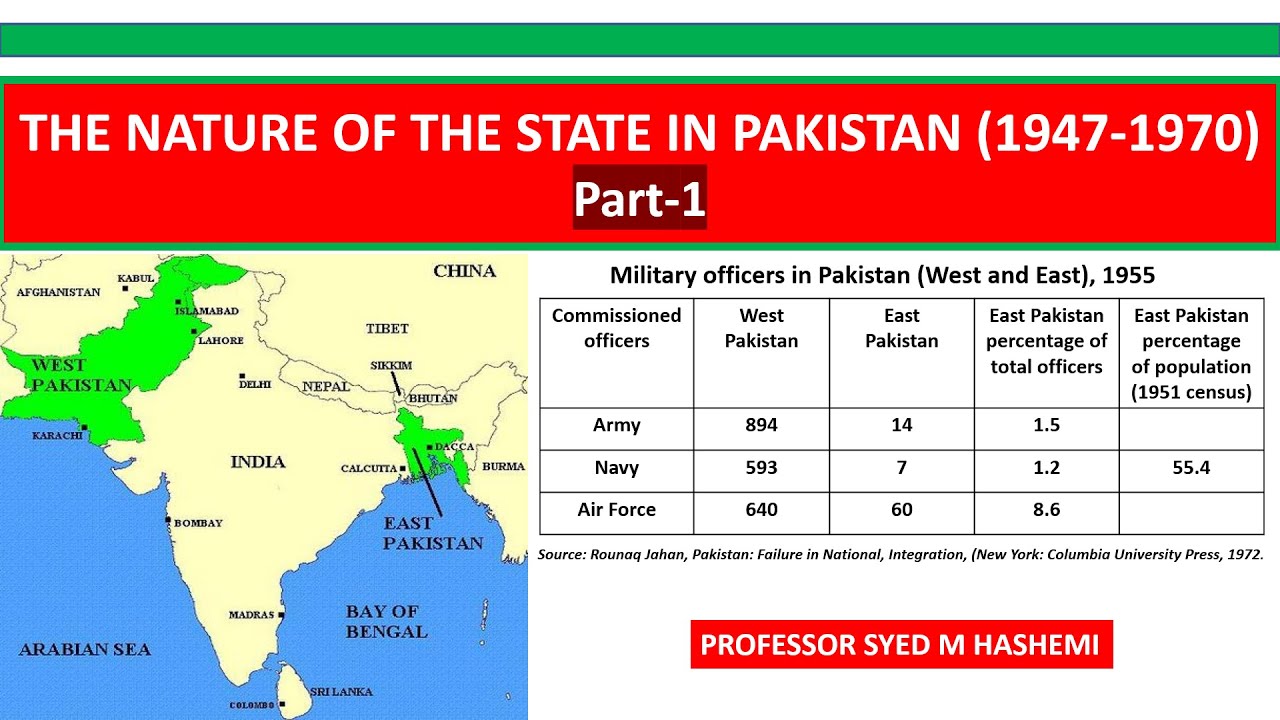পাকিস্তান আমলে আঞ্চলিক বৈষম্য কেমন ছিলো Capitalist Development and Regional Disparity in Pakistan
Summary
TLDRThe lecture explores the economic exploitation of East Pakistan (now Bangladesh) by West Pakistan during the period from 1947 to 1971. Initially hopeful for unity, East Pakistanis soon faced growing economic disparities, with West Pakistan benefiting from government policies. The lecture details how capitalist development, led by American advisors, deepened these disparities in income, consumption, and access to resources. The Six-Point Program, which sought to address these inequalities, was rejected by the Pakistani state, leading to further conflict. The session concludes with a promise to discuss the political struggles for autonomy in the next class.
Takeaways
- 📜 East Pakistan (now Bangladesh) initially supported Pakistan in 1947 but quickly faced exploitation by West Pakistan.
- 💸 Pakistan adopted a capitalist development model, influenced by American advisors, which led to increasing economic disparity between East and West Pakistan.
- 📊 The income gap between East and West Pakistan widened significantly, with West Pakistan earning 61% more by 1969-70.
- 🧈 Consumption of basic goods like milk, butter, and meat was far higher in West Pakistan than in East Pakistan, highlighting the disparity in living standards.
- 💡 East Pakistan received less foreign aid and public investment, with only 31% of foreign aid allocated to the region, despite significant contributions.
- 🏭 Non-Bengalis controlled 93% of industrial assets in East Pakistan, leading to further economic exploitation.
- 📉 The overvaluation of the Pakistani rupee benefited West Pakistani industrialists while East Pakistani jute growers faced significant losses.
- 🗣 Bengali economists and intellectuals in the late 1960s began protesting these disparities and challenging the capitalist model imposed by the government.
- 📑 Sheikh Mujib and the Awami League proposed the Six-Point Program to ensure greater autonomy and economic fairness for East Pakistan.
- ⚖️ The economic exploitation and disparity between East and West Pakistan eventually fueled the independence movement in East Pakistan, leading to the creation of Bangladesh.
Q & A
What was the initial support for Pakistan in East Pakistan after 1947?
-In 1947, the overwhelming majority of people in East Pakistan, now Bangladesh, supported the Muslim League and the creation of Pakistan, hoping for economic and cultural benefits.
How did East Pakistan's perception of Pakistan change over time?
-Over the 24 years following 1947, the people of East Pakistan began to realize that Pakistan was exploiting them economically and treating East Pakistan as a colony.
What economic model did Pakistan follow after 1947, and what were its implications?
-Pakistan pursued a capitalist development model, heavily influenced by American advisors during the Cold War. This model led to increasing regional economic disparity between East and West Pakistan, with West Pakistan benefiting disproportionately.
What was the income disparity between East and West Pakistan from 1949 to 1970?
-In 1949-50, West Pakistanis earned 22% more than East Pakistanis, and by 1969-70, this gap had increased to 61%, highlighting growing economic inequality.
How did consumption patterns differ between East and West Pakistan?
-Consumption in West Pakistan was much higher. For example, East Pakistanis consumed 2.1 pounds of milk and butter per month, while West Pakistanis consumed 8.6 pounds. This stark difference was also seen in other commodities like mutton, beef, and fish.
How did foreign aid and government spending differ between East and West Pakistan?
-East Pakistan received only 31% of foreign aid, while West Pakistan received 69%. Additionally, West Pakistan benefited from significantly more government spending in development and infrastructure.
What was the economic impact of Pakistan's overvalued currency on East Pakistan?
-Pakistan overvalued its currency, which benefited West Pakistan's industrialists by allowing them to buy imported goods more cheaply. Conversely, East Pakistan's jute growers received less money for their exports, exacerbating economic exploitation.
Who controlled the industrial assets in East Pakistan?
-Non-Bengalis controlled 93% of the industrial assets in East Pakistan. They also dominated banking, with 70% of all bank deposits being in non-Bengali banks.
What was the significance of the Six-Point Program developed by Sheikh Mujib and the Awami League?
-The Six-Point Program, developed in 1966, aimed to reduce exploitation by ensuring greater economic and political autonomy for East Pakistan. It became the basis of the 1970 elections and called for separate control of finances, military, and government decisions for East Pakistan.
How did economic exploitation contribute to the rise of Bengali nationalism?
-The clear economic exploitation of East Pakistan by West Pakistan, highlighted by disparities in income, consumption, and government spending, fueled Bengali nationalism. The Six-Point Program and growing awareness of economic inequality led to increasing demands for autonomy and eventually independence.
Outlines

هذا القسم متوفر فقط للمشتركين. يرجى الترقية للوصول إلى هذه الميزة.
قم بالترقية الآنMindmap

هذا القسم متوفر فقط للمشتركين. يرجى الترقية للوصول إلى هذه الميزة.
قم بالترقية الآنKeywords

هذا القسم متوفر فقط للمشتركين. يرجى الترقية للوصول إلى هذه الميزة.
قم بالترقية الآنHighlights

هذا القسم متوفر فقط للمشتركين. يرجى الترقية للوصول إلى هذه الميزة.
قم بالترقية الآنTranscripts

هذا القسم متوفر فقط للمشتركين. يرجى الترقية للوصول إلى هذه الميزة.
قم بالترقية الآنتصفح المزيد من مقاطع الفيديو ذات الصلة

The nature of the state in Pakistan (1947-1970), Part-1

India Pakistan 1971 War Explained

How CONDOMS Helped India WIN 1971 War?

History: What Indira Gandhi Did In 1971 Indo-Pak Clash| Operation Sindoor

Wars Of 1965 and 1971 | Olevel Pakistan Studies | 2059/01 | Muhammad Yousuf Memon

India Pakistan 1971 War | Why it happened? | Bangladesh Liberation | Dhruv Rathee
5.0 / 5 (0 votes)
